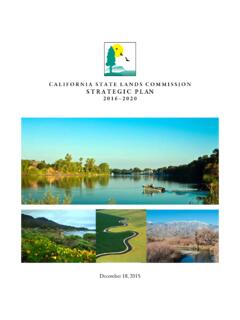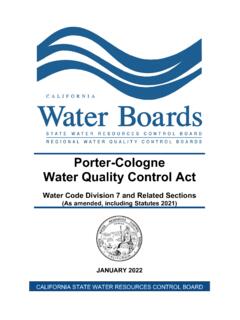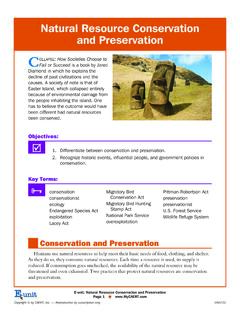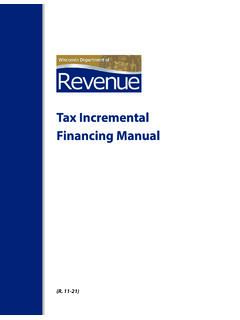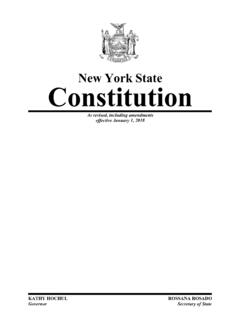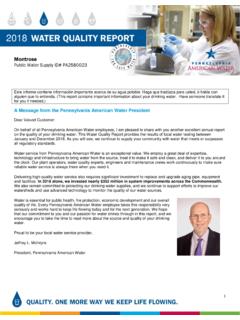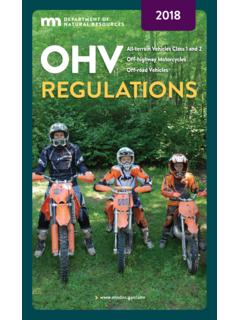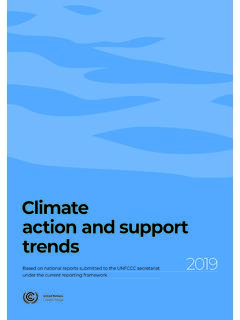Transcription of What Is Water Pollution?
1 SCS-2005-02 Water and Me SeriesWhat Is Water Pollution? what Is Water Pollution? what Is Water Pollution? what Is Water Pollution? what Is Water pollution ?* Monty C. DozierAssistant Professor and Extension Water Resources SpecialistMineLoggingFactorySuburbWastew ater PlantFarmCityPortOil RigMineLoggingFactorySuburbWastewater PlantFarmCityPortOil RigVisit our website for additional information: is a word that you hear almost every day in the news, at school and in day-to-day conversations. Oursociety has produced many kinds of pollution , some are more dangerous than others.
2 Scientists are constantly studyinghow the different types of pollution affect the environment and how it can be controlled. Much has been done to reduceand control pollution , but there is still more that needs to be is your definition of something is added to the environment that makes itunclean or unsafe it is called pollution . WaterWaterWaterWaterWaterPollutionPollut ionPollutionPollutionPollution occurs when the Water becomes over-loaded with too much of one thing and the aquatic or-ganisms cannot keep up with their cleaning responsibili-ties. Some organisms may die and others may grow toofast.
3 There are many types and sources of Water the picture, list sources of pollution (such as sewage pollution )that can pollute surface Water or and Sources of Water PollutionTypes and Sources of Water PollutionTypes and Sources of Water PollutionTypes and Sources of Water PollutionTypes and Sources of Water PollutionThere are several major types of Water pollution . One of the most destructive typesis Petroleum PollutionPetroleum PollutionPetroleum PollutionPetroleum PollutionPetroleum pollution . Petroleum products, such as oil and gasoline, enterthe Water from ships and marine terminals, offshore oil rigs, runoff from parking lots,factories, oil dumping, and other sources.
4 Many of the worst pollution disasters havebeen due to accidents involving oil rigs, pipelines, or oil PollutionSewage PollutionSewage PollutionSewage PollutionSewage pollution comes from both urban (city) and rural (country) areas. Although many cities and towns havesewage treatment plants, at times, such as during a flood event some may be unable to handle the amount of sewageproduced. Treatment plant failures and overflows may result in untreated sewageentering rivers and coastal waters. Some coastal cities may still be using the openocean as a sewage dumping site.
5 Small pleasure boats, as well as larger ships, canpollute waters by illegally from Solid WastesSolid WastesSolid WastesSolid WastesSolid Wastes is a major problem for many communities. Mostsolid wastes are handled by taking them to landfills, but some illegal dumping of gar-bage, old tires and other solid wastes occurs. A hazard to both humans and wildlife,solid wastes are unsightly, slow to degrade and, in some cases, ships, power plants and other users of Nuclear EnergyNuclear EnergyNuclear EnergyNuclear EnergyNuclear Energy are possiblesources of Radiation PollutionRadiation PollutionRadiation PollutionRadiation PollutionRadiation pollution , not so much from accidents, but from disposal ofnuclear materials such as spent numclear fuel factories and nuclear power plants use Water cooling during manufacturing processes andreactor cooling.
6 Water taken from rivers, bays or lakes is heated and, if returned directly to the environ-ment, can lead to what is called HeatHeatHeatHeatHeat or Thermal PollutionThermal PollutionThermal PollutionThermal PollutionThermal and industrial plants produce thousands of different types of Toxic ChemicalsToxic ChemicalsToxic ChemicalsToxic ChemicalsToxic Chemicals and WastesWastesWastesWastesWastes. Chemi-cals such as PCB s (polychlorinated biphenyls) and TCETCETCETCETCE (trichloroethene) have been highly publicized due to beingfound in the environment and their harmful effects on living use of FertilizersFertilizersFertilizersFertili zersFertilizers and PesticidesPesticidesPesticidesPesticides Pesticides on cropland, gardens and yards helpsfarms and homeowners but can also be damaging to aquatic and marine life when notproperly applied or managed in rural and urban areas.
7 Poorly managed AnimalAnimalAnimalAnimalAnimalWastesWast esWastesWastesWastes from farms can also add excess nutrients to rivers and lakes. In addition,runoff from farm lands and urban areas carries large amounts of sediment into waterwaysmaking the Water cloudy or murky. Sediment is the number one pollutant by volume ofsurface Water in the United 2 Page 2 Page 2 Page 2 Page 2 Page 3 Page 3 Page 3 Page 3 Page 3 Make a list of the ways that you may add to Source pollution (NPS)Nonpoint Source pollution (NPS)Nonpoint Source pollution (NPS)Nonpoint Source pollution (NPS)Nonpoint Source pollution (NPS)Nonpoint source pollution (NPS)
8 Can be defined as pollution that comes from manymiscellaneous or diffuse sources rather than from an identifiable, specific source pollution can originate from urban environments such as yards inneighborhoods or from agricultural production areas such as crop , waste products and soil that are carried by rain into streams or rivers become apart of NPS. Common examples are fertilizers, herbicides, pesticides, spilled motor oil and wastes from pets, wildlifeand livestock. Other significant sources of NPS include:1. of wastes in catch basins2. Hazardous waste improperly stored or operating septic systems3.
9 Erosion from construction sites, farms or deposition including acid rain and fog4. pollution from roadways and road salting sewer lines5. Discharge of sewage and garbage from ships and use of fertilizers and pesticides6. Cleansers and other compounds used on shipsin the urban or agriculture environmentand boats to prevent barnacles and algae from accumulating12. Animal feeding operationsPoint Source pollution (PS)Point Source pollution (PS)Point Source pollution (PS)Point Source pollution (PS)Point Source pollution (PS)Point source pollution (PS) comes directly from a known source like an industrial or sewage outfall pipe.
10 Pointsources are typically associated with manufacturing processes. However, point sources also includedischarges from Water treatment plants and large animal feeding Water PollutionThermal Water PollutionThermal Water PollutionThermal Water PollutionThermal Water PollutionSurface Water that is heated can lead to what is called thermal Water pollution . Heatis sometimes considered point source pollution . Main contributors to thermalpollution are the companies that process our food and generate our generating plants can create thermal Water pollution when they usesurface Water to condense steam, which is used to turn turbines, back to theliquid state where Water can be used Water is heated, oxygen and carbon dioxide levels drop.
